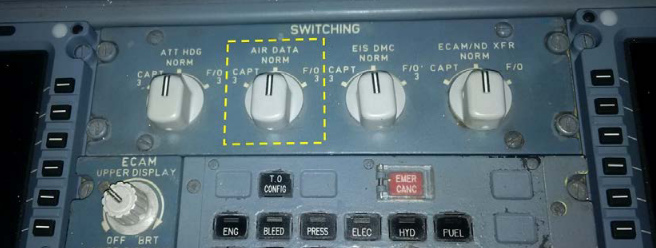OnThe A320 there are 3 ADIRUis fitted with an air data inertial reference system (ADIRS) made of 3 ADIRUs. ADIRU 1 isdata (altitude, speed, etc) are shown on Capt displayside, ADIRU 2 on F/O displayside. ADIRU 3 can be selected manually.
Each ADIRU contains an air data reference (ADR) and an inertial reference (IR). Each ADR receives the AoA value from a separate AoA probe.
The AoA value is not displayed by default, but it is accessible on the MCDU after selecting the related page. However theThe values are always usedmonitored for validity by computersFAC/ELAC before being used.
The final value is the mean of valid inputs. If values from ADRsone ADR disagree, an ELAC can reject the faulty value it is silently discarded. AIf all ADR disagree, a message is displayed, any. Any ADR can be disconnected fromshut down using the overhead panel. From this report:
If one ADR has been detected as being faulty, or has been rejected by the flight control computers, and there is an airspeed or angle of attack disagreement between the remaining two ADRs, then a level 2 alert is raised. This activates the master caution and presents an amber NAV ADR DISAGREE message on the ECAM.
The value used for computation is the mean value of valid inputs. The way the discrepancies are managed can lead to rejecting a goodvalid value because the two other ADR are wrong, but agree.
All pictures are from the report.



